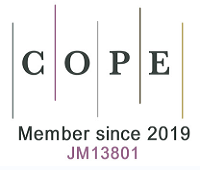REFERENCES
2. Guan JJ, Zhang XD, Sun W, Qi L, Wu JC, et al. DRAM1 regulates apoptosis through increasing protein levels and lysosomal localization of BAX. Cell Death Dis 2015;6:e1624.
3. Salvador N, Aguado C, Horst M, Knecht E. Import of a cytosolic protein into lysosomes by chaperone-mediated autophagy depends on its folding state. J Biol Chem 2000;275:27447-56.
4. Guillaumot P, Luquain C, Malek M, Huber AL, Brugière S, et al. Pdro, a protein associated with late endosomes and lysosomes and implicated in cellular cholesterol homeostasis. PLoS One 2010;5:e10977.
5. Kon S, Kobayashi N, Satake M. Altered trafficking of mutated growth factor receptors and their associated molecules: implication for human cancers. Cell Logist 2014;4:e28461.
6. Goh LK, Sorkin A. Endocytosis of receptor tyrosine kinases. Cold Spring Harb Perspect Biol 2013;5:a017459.
7. Mohamed MM, Sloane BF. Cysteine cathepsins: multifunctional enzymes in cancer. Nat Rev Cancer 2006;6:764-75.
8. Vlodavsky I, Elkin M, Ilan N. Impact of heparanase and the tumor microenvironment on cancer metastasis and angiogenesis: basic aspects and clinical applications. Rambam Maimonides Med J 2011;2:e0019.
9. Palermo C, Joyce JA. Cysteine cathepsin proteases as pharmacological targets in cancer. Trends Pharmacol Sci 2008;29:22-8.
10. Wang B, Sun J, Kitamoto S, Yang M, Grubb A, et al. Cathepsin S controls angiogenesis and tumor growth via matrix-derived angiogenic factors. J Biol Chem 2006;281:6020-9.
11. Podgorski I, Linebaugh BE, Sameni M, Jedeszko C, Bhagat S, et al. Bone microenvironment modulates expression and activity of cathepsin B in prostate cancer. Neoplasia 2005;7:207-23.
12. Boya P, Andreau K, Poncet D, Zamzami N, Perfettini JL, et al. Lysosomal membrane permeabilization induces cell death in a mitochondrion-dependent fashion. J Exp Med 2003;197:1323-34.
13. Kirkegaard T, Jäättelä M. Lysosomal involvement in cell death and cancer. Biochim Biophys Acta 2009;1793:746-54.
15. Groth-Pedersen L, Jäättelä M. Combating apoptosis and multidrug resistant cancers by targeting lysosomes. Cancer Lett 2013;332:265-74.
16. Holohan C, Van Schaeybroeck S, Longley DB, Johnston PG. Cancer drug resistance: an evolving paradigm. Nat Rev Cancer 2013;13:714-26.
17. Higgins CF. Multiple molecular mechanisms for multidrug resistance transporters. Nature 2007;446:749-57.
18. Al-Akra L, Bae DH, Sahni S, Huang MLH, Park KC, et al. Tumor stressors induce two mechanisms of intracellular P-glycoprotein-mediated resistance that are overcome by lysosomal-targeted thiosemicarbazones. J Biol Chem 2018;293:3562-87.
19. Rajagopal A, Simon SM. Subcellular localization and activity of multidrug resistance proteins. Mol Biol Cell 2003;14:3389-99.
20. Kunjachan S, Rychlik B, Storm G, Kiessling F, Lammers T. Multidrug resistance: Physiological principles and nanomedical solutions. Adv Drug Deliv Rev 2013;65:1852-65.
21. Shapira A, Livney YD, Broxterman HJ, Assaraf YG. Nanomedicine for targeted cancer therapy: towards the overcoming of drug resistance. Drug Resist Updat 2011;14:150-63.
22. Goldman SDB, Funk RS, Rajewski RA, Krise JP. Mechanisms of amine accumulation in, and egress from, lysosomes. Bioanalysis 2009;1:1445-59.
23. Kazmi F, Hensley T, Pope C, Funk RS, Loewen GJ, et al. Lysosomal sequestration (trapping) of lipophilic amine (cationic amphiphilic) drugs in immortalized human hepatocytes (Fa2N-4 cells). Drug Metab Dispos 2013;41:897-905.
24. Gotink KJ, Broxterman HJ, Labots M, de Haas RR, Dekker H, et al. Lysosomal sequestration of sunitinib: a novel mechanism of drug resistance. Clin Cancer Res 2011;17:7337-46.
25. Hurwitz SJ, Terashima M, Mizunuma N, Slapak CA. Vesicular anthracycline accumulation in doxorubicin-selected U-937 cells: participation of lysosomes. Blood 1997;89:3745-54.
26. Adar Y, Stark M, Bram EE, Nowak-Sliwinska P, van den Bergh H, et al. Imidazoacridinone-dependent lysosomal photodestruction: a pharmacological Trojan horse approach to eradicate multidrug-resistant cancers. Cell Death Dis 2012;3:e293.
27. Herlevsen M, Oxford G, Owens CR, Conaway M, Theodorescu D. Depletion of major vault protein increases doxorubicin sensitivity and nuclear accumulation and disrupts its sequestration in lysosomes. Mol Cancer Ther 2007;6:1804-13.
28. Ndolo RA, Luan Y, Duan S, Forrest ML, Krise JP. Lysosomotropic properties of weakly basic anticancer agents promote cancer cell selectivity in vitro. PLoS One 2012;7:e49366.
29. Marshall LA, Rhee MS, Hofmann L, Khodjakov A, Schneider E. Increased lysosomal uptake of methotrexate-polyglutamates in two methotrexate-resistant cell lines with distinct mechanisms of resistance. Biochem Pharmacol 2005;71:203-13.
30. Jansen G, Barr H, Kathmann I, Bunni MA, Priest DG, et al. Multiple mechanisms of resistance to polyglutamatable and lipophilic antifolates in mammalian cells: role of increased folylpolyglutamylation,expanded folate pools, and intralysosomal drug sequestration. Mol Pharmacol 1999;55:761-9.
31. Li W, Yuan X, Nordgren G, Dalen H, Dubowchik GM, et al. Induction of cell death by the lysosomotropic detergent MSDH. FEBS Lett 2000;470:35-9.
32. Cirman T, Oresić K, Mazovec GD, Turk V, Reed JC, et al. Selective disruption of lysosomes in HeLa cells triggers apoptosis mediated by cleavage of Bid by multiple papain-like lysosomal cathepsins. J Biol Chem 2004;279:3578-87.
33. Kågedal K, Zhao M, Svensson I, Brunk UT. Sphingosine-induced apoptosis is dependent on lysosomal proteases. Biochem J 2001;359:335-43.
34. Erdal H, Berndtsson M, Castro J, Brunk U, Shoshan MC, et al. Induction of lysosomal membrane permeabilization by compounds that activate p53-independent apoptosis. Proc Natl Acad Sci USA 2005;102:192-7.
35. Ostenfeld MS, Høyer-Hansen M, Bastholm L, Fehrenbacher N, Olsen OD, et al. Anti-cancer agent siramesine is a lysosomotropic detergent that induces cytoprotective autophagosome accumulation. Autophagy 2008;4:487-99.
36. Groth-Pedersen L, Ostenfeld MS, Høyer-Hansen M, Nylandsted J, Jäättelä M. Vincristine induces dramatic lysosomal changes and sensitizes cancer cells to lysosome-destabilizing siramesine. Cancer Res 2007;67:2217-25.
37. Rammer P, Groth-Pedersen L, Kirkegaard T, Daugaard M, Rytter A, et al. BAMLET activates a lysosomal cell death program in cancer cells. Mol Cancer Ther 2010;9:24-32.
38. Hahne JC, Kurz A, Meyer SR, Dietl J, Engel JB, et al. Anti-tumour activity of phosphoinositide-3-kinase antagonist AEZS-126 in models of ovarian cancer. Arch Gynecol Obstet 2015;291:131-41.
39. Yi YW, Kang HJ, Kim HJ, Hwang JS, Wang A, et al. Inhibition of constitutively activated phosphoinositide 3-kinase/AKT pathway enhances antitumor activity of chemotherapeutic agents in breast cancer susceptibility gene 1-defective breast cancer cells. Mol Carcinog 2013;52:667-75.
40. Martin-Fernandez C, Bales J, Hodgkinson C, Welman A, Welham MJ, et al. Blocking phosphoinositide 3-kinase activity in colorectal cancer cells reduces proliferation but does not increase apoptosis alone or in combination with cytotoxic drugs. Mol Cancer Res 2009;7:955-65.
41. Mousavi SA, Brech A, Berg T, Kjeken R. Phosphoinositide 3-kinase regulates maturation of lysosomes in rat hepatocytes. Biochem J 2003;372:861-9.
42. Silverman GA, Bartuski AJ, Cataltepe S, Gornstein ER, Kamachi Y, et al. SCCA1 and SCCA2 are proteinase inhibitors that map to the serpin cluster at 18q21.3. Tumour Biol 1998;19:480-7.
44. Kirkegaard T, Roth AG, Petersen NH, Mahalka AK, Olsen OD, et al. Hsp70 stabilizes lysosomes and reverts Niemann-Pick disease-associated lysosomal pathology. Nature 2010;463:549-53.
45. Nylandsted J, Gyrd-Hansen M, Danielewicz A, Fehrenbacher N, Lademann U, et al. Heat shock protein 70 promotes cell survival by inhibiting lysosomal membrane permeabilization. J Exp Med 2004;200:425-35.
46. Gyrd-Hansen M, Nylandsted J, Jäättelä M. Heat shock protein 70 promotes cancer cell viability by safeguarding lysosomal integrity. Cell Cycle 2004;3:1484-5.
47. Altan N, Chen Y, Schindler M, Simon SM. Defective acidification in human breast tumor cells and implications for chemotherapy. J Exp Med 1998;187:1583-98.
48. Englinger B, Kallus S, Senkiv J, Heilos D, Gabler L, et al. Intrinsic fluorescence of the clinically approved multikinase inhibitor nintedanib reveals lysosomal sequestration as resistance mechanism in FGFR-driven lung cancer. J Exp Clin Cancer Res 2017;36:122.
49. Zhitomirsky B, Assaraf YG. Lysosomal sequestration of hydrophobic weak base chemotherapeutics triggers lysosomal biogenesis and lysosome-dependent cancer multidrug resistance. Oncotarget 2015;6:1143-56.
50. Mayer LD, Bally MB, Cullis PR. Uptake of adriamycin into large unilamellar vesicles in response to a pH gradient. Biochim Biophys Acta 1986;857:123-6.
51. Angus DW, Baker JA, Mason R, Martin IJ. The potential influence of CO2, as an agent for euthanasia, on the pharmacokinetics of basic compounds in rodents. Drug Metab Dispos 2008;36:375-9.
52. Colombo F, Trombetta E, Cetrangolo P, Maggioni M, Razini P, et al. Giant lysosomes as a chemotherapy resistance mechanism in hepatocellular carcinoma cells. PLoS One 2014;9:e114787.
53. Reck M, Mellemgaard A, von Pawel J, Gottfried M, Bondarenko I, et al. Anti-angiogenic-specific adverse events in patients with non-small cell lung cancer treated with nintedanib and docetaxel. Lung Cancer 2015;90:267-73.
54. Mross K, Büchert M, Frost A, Medinger M, Stopfer P, et al. Vascular effects, efficacy and safety of nintedanib in patients with advanced, refractory colorectal cancer: a prospective phase I subanalysis. BMC Cancer 2014;14:510.
55. Molife LR, Omlin A, Jones RJ, Karavasilis V, Bloomfield D, et al. Randomized phase II trial of nintedanib, afatinib and sequential combination in castration-resistant prostate cancer. Future Oncol 2014;10:219-31.
56. Kutluk Cenik B, Ostapoff KT, Gerber DE, Brekken RA. BIBF 1120 (nintedanib), a triple angiokinase inhibitor, induces hypoxia but not EMT and blocks progression of preclinical models of lung and pancreatic cancer. Mol Cancer Ther 2013;12:992-1001.
57. Burger H, den Dekker AT, Segeletz S, Boersma AWM, de Bruijn P, et al. Lysosomal sequestration determines intracellular imatinib levels. Mol Pharmacol 2015;88:477-87.
58. Kalayda GV, Wagner CH, Buss I, Reedijk J, Jaehde U. Altered localisation of the copper efflux transporters ATP7A and ATP7B associated with cisplatin resistance in human ovarian carcinoma cells. BMC Cancer 2008;8:175.
59. Safaei R, Larson BJ, Cheng TC, Gibson MA, Otani S, et al. Abnormal lysosomal trafficking and enhanced exosomal export of cisplatin in drug-resistant human ovarian carcinoma cells. Mol Cancer Ther 2005;4:1595-604.
60. Settembre C, Zoncu R, Medina DL, Vetrini F, Erdin S, et al. A lysosome-to-nucleus signalling mechanism senses and regulates the lysosome via mTOR and TFEB. EMBO J 2012;31:1095-108.
61. Martina JA, Chen Y, Gucek M, Puertollano R. MTORC1 functions as a transcriptional regulator of autophagy by preventing nuclear transport of TFEB. Autophagy 2012;8:903-14.
62. Medina DL, Di Paola S, Peluso I, Armani A, De Stefani D, et al. Lysosomal calcium signalling regulates autophagy through calcineurin and TFEB. Nat Cell Biol 2015;17:288-99.
63. Sardiello M, Palmieri M, di Ronza A, Medina DL, Valenza M, et al. A gene network regulating lysosomal biogenesis and function. Science 2009;325:473-7.
64. Gotink KJ, Rovithi M, de Haas RR, Honeywell RJ, Dekker H, et al. Cross-resistance to clinically used tyrosine kinase inhibitors sunitinib, sorafenib and pazopanib. Cell Oncol (Dordr) 2015;38:119-29.
65. Martina JA, Puertollano R. Rag GTPases mediate amino acid-dependent recruitment of TFEB and MITF to lysosomes. J Cell Biol 2013;200:475-91.
66. Syed SB, Arya H, Fu IH, Yeh TK, Periyasamy L, et al. Targeting P-glycoprotein: investigation of piperine analogs for overcoming drug resistance in cancer. Sci Rep 2017;7:7972.
67. Sinha BK, Bortner CD, Mason RP, Cannon RE. Nitric oxide reverses drug resistance by inhibiting ATPase activity of p-glycoprotein in human multi-drug resistant cancer cells. Biochim Biophys Acta Gen Subj 2018;1862:2806-14.
68. Yamagishi T, Sahni S, Sharp DM, Arvind A, Jansson PJ, et al. P-glycoprotein mediates drug resistance via a novel mechanism involving lysosomal sequestration. J Biol Chem 2013;288:31761-71.
69. Forgac M. Vacuolar ATPases: rotary proton pumps in physiology and pathophysiology. Nat Rev Mol Cell Biol 2007;8:917-29.
70. Shiraishi N, Akiyama S, Kobayashi M, Kuwano M. Lysosomotropic agents reverse multiple drug resistance in human cancer cells. Cancer Lett 1986;30:251-9.
71. Katayama K, Kapoor K, Ohnuma S, Patel A, Swaim W, et al. Revealing the fate of cell surface human P-glycoprotein (ABCB1): the lysosomal degradation pathway. Biochim Biophys Acta 2015;1853:2361-70.
72. Palmeira A, Sousa E, Vasconcelos MH, Pinto MM. Three decades of P-gp inhibitors: skimming through several generations and scaffolds. Curr Med Chem 2012;19:1946-2025.
73. Chapuy B, Panse M, Radunski U, Koch R, Wenzel D, et al. ABC transporter A3 facilitates lysosomal sequestration of imatinib and modulates susceptibility of chronic myeloid leukemia cell lines to this drug. Haematologica 2009;94:1528-36.
74. Rodríguez A, Webster P, Ortego J, Andrews NW. Lysosomes behave as Ca2+-regulated exocytic vesicles in fibroblasts and epithelial cells. J Cell Biol 1997;137:93-104.
75. Medina DL, Fraldi A, Bouche V, Annunziata F, Mansueto G, et al. Transcriptional activation of lysosomal exocytosis promotes cellular clearance. Dev Cell 2011;21:421-30.
76. Sundler R. Lysosomal and cytosolic pH as regulators of exocytosis in mouse macrophages. Acta Physiol Scand 1997;161:553-6.
77. Kallunki T, Olsen OD, Jäättelä M. Cancer-associated lysosomal changes: friends or foes? Oncogene 2013;32:1995-2004.
78. Ouar Z, Bens M, Vignes C, Paulais M, Pringel C, et al. Inhibitors of vacuolar H+-ATPase impair the preferential accumulation of daunomycin in lysosomes and reverse the resistance to anthracyclines in drug-resistant renal epithelial cells. Biochem J 2003;370:185-93.
79. Gotink KJ, Broxterman HJ, Honeywell RJ, Dekker H, de Haas RR, et al. Acquired tumor cell resistance to sunitinib causes resistance in a HT-29 human colon cancer xenograft mouse model without affecting sunitinib biodistribution or the tumor microvasculature. Oncoscience 2014;1:844-53.
80. Li Y, Sun Y, Jing L, Wang J, Yan Y, et al. Lysosome inhibitors enhance the chemotherapeutic activity of doxorubicin in hepg2 cells. Chemotherapy 2017;62:85-93.
81. Wang E, Lee MD, Dunn KW. Lysosomal accumulation of drugs in drug-sensitive MES-SA but not multidrug-resistant MES-SA/Dx5 uterine sarcoma cells. J Cell Physiol 2000;184:263-74.
82. Circu M, Cardelli J, Barr MP, O’Byrne K, Mills G, et al. Modulating lysosomal function through lysosome membrane permeabilization or autophagy suppression restores sensitivity to cisplatin in refractory non-small-cell lung cancer cells. PLoS One 2017;12:e0184922.
83. Wang Y, Peng RQ, Li DD, Ding Y, Wu XQ, et al. Chloroquine enhances the cytotoxicity of topotecan by inhibiting autophagy in lung cancer cells. Chin J Cancer 2011;30:690-700.
84. Lovejoy DB, Jansson PJ, Brunk UT, Wong J, Ponka P, et al. Antitumor activity of metal-chelating compound Dp44mT is mediated by formation of a redox-active copper complex that accumulates in lysosomes. Cancer Res 2011;71:5871-80.
85. Yang X, Grailer JJ, Pilla S, Steeber DA, Gong S. Tumor-targeting, pH-responsive, and stable unimolecular micelles as drug nanocarriers for targeted cancer therapy. Bioconjug Chem 2010;21:496-504.
86. Ríhová B, Etrych T, Pechar M, Jelínková M, Stastný M, et al. Doxorubicin bound to a HPMA copolymer carrier through hydrazone bond is effective also in a cancer cell line with a limited content of lysosomes. J Control Release 2001;74:225-32.
87. Lai PS, Lou PJ, Peng CL, Pai CL, Yen WN, et al. Doxorubicin delivery by polyamidoamine dendrimer conjugation and photochemical internalization for cancer therapy. J Control Release 2007;122:39-46.
88. Minko T, Kopecková P, Pozharov V, Kopecek J. HPMA copolymer bound adriamycin overcomes MDR1 gene encoded resistance in a human ovarian carcinoma cell line. J Control Release 1998;54:223-33.
89. Nowak-Sliwinska P, Weiss A, van Beijnum JR, Wong TJ, Kilarski WW, et al. Photoactivation of lysosomally sequestered sunitinib after angiostatic treatment causes vascular occlusion and enhances tumor growth inhibition. Cell Death Dis 2015;6:e1641.
90. Seebacher NA, Lane DJR, Jansson PJ, Richardson DR. Glucose modulation induces lysosome formation and increases lysosomotropic drug sequestration via the P-glycoprotein drug transporter. J Biol Chem 2016;291:3796-820.
91. Seebacher NA, Richardson DR, Jansson PJ. A mechanism for overcoming P-glycoprotein-mediated drug resistance: novel combination therapy that releases stored doxorubicin from lysosomes via lysosomal permeabilization using Dp44mT or DpC. Cell Death Dis 2016;7:e2510.
92. Jansson PJ, Yamagishi T, Arvind A, Seebacher N, Gutierrez E, et al. Di-2-pyridylketone 4,4-dimethyl-3-thiosemicarbazone (Dp44mT) overcomes multidrug resistance by a novel mechanism involving the hijacking of lysosomal P-glycoprotein (Pgp). J Biol Chem 2015;290:9588-603.
93. Weinberg ED. Iron withholding: a defense against infection and neoplasia. Physiol Rev 1984;64:65-102.
94. Xie H, Kang YJ. Role of copper in angiogenesis and its medicinal implications. Curr Med Chem 2009;16:1304-14.
95. Hassouneh B, Islam M, Nagel T, Pan Q, Merajver SD, et al. Tetrathiomolybdate promotes tumor necrosis and prevents distant metastases by suppressing angiogenesis in head and neck cancer. Mol Cancer Ther 2007;6:1039-45.
96. Cuvier C, Roblot-Treupel L, Millot JM, Lizard G, Chevillard S, et al. Doxorubicin-loaded nanospheres bypass tumor cell multidrug resistance. Biochem Pharmacol 1992;44:509-17.
97. Elbayoumi TA, Torchilin VP. Enhanced cytotoxicity of monoclonal anticancer antibody 2C5-modified doxorubicin-loaded PEGylated liposomes against various tumor cell lines. Eur J Pharm Sci 2007;32:159-68.
98. Ono K, Kim SO, Han J. Susceptibility of lysosomes to rupture is a determinant for plasma membrane disruption in tumor necrosis factor alpha-induced cell death. Mol Cell Biol 2003;23:665-76.
99. Eaton JW, Qian M. Molecular bases of cellular iron toxicity. Free Radic Biol Med 2002;32:833-40.
100. Xue Z, Wang S, Li J, Chen X, Han J, et al. Bifunctional super-resolution imaging probe with acidity-independent lysosome-retention mechanism. Anal Chem 2018;90:11393-400.
101. Zhitomirsky B, Assaraf YG. Lysosomes as mediators of drug resistance in cancer. Drug Resist Updat 2016;24:23-33.
102. Kornhuber J, Henkel AW, Groemer TW, Städtler S, Welzel O, et al. Lipophilic cationic drugs increase the permeability of lysosomal membranes in a cell culture system. J Cell Physiol 2010;224:152-64.
103. Fu D, Zhou J, Zhu WS, Manley PW, Wang YK, et al. Imaging the intracellular distribution of tyrosine kinase inhibitors in living cells with quantitative hyperspectral stimulated Raman scattering. Nat Chem 2014;6:614-22.











